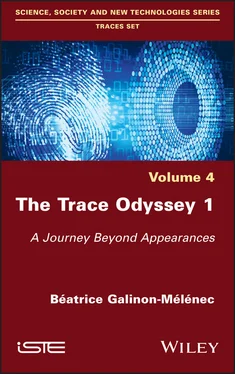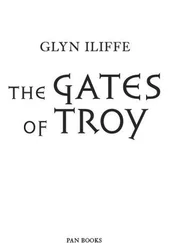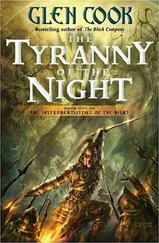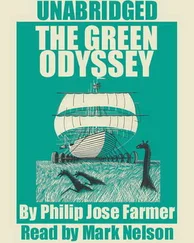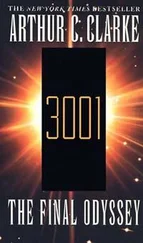Introduction
Establishment of the Roadmap
I.1. Preamble
The use of the term “trace” is associated with many old and ancient practices - (traces of passage, heritage traces, etc.), but also with more specifically current contexts, such as that of the digital society. The question of the origin of a trace has always been of a particular interest to certain professionals: the investigator in pursuit of a criminal, the doctor researching symptoms, the archaeologist wishing to reconstruct the lifestyles of ancient civilizations, historians seeking to retrace the path of humans over the centuries, astrophysicists watching for gravitational waves, the tax inspector, etc.
NOTE.– The concept of trace questions every period in the history of humanity and the cosmos, both past and future. The force of the questions on the nature of the concept of trace and its consequences is accentuated when scientific developments open up new horizons and when humans become aware that their present choices produce conséquences-traces 1in their lives and in those of future generations.
Today, more and more social actors in society (individuals, organizations, public institutions) are taking the concept of conséquences-traces into account in their activities, particularly as the digital society opens up other forms of presence in the world.
I.2. The call of digital society for new forms of traceability
The pressing obligation to exist on the Web leads to the temptation to circulate pieces of information that are constantly renewed and multiplied, although quickly or poorly verified, in response to flattering misrepresentations (Goffman 1973) that invite the adoption of digital devices providing false appearances (Debord 1967). The machine records important digital inscriptions and circulates them according to a given algorithm logic.
Initially, an algorithm is a logical sequence of actions. For example, a kitchen recipe is an algorithm that provides instructions to someone wishing to cook, by specifying the execution of tasks, and their contents, in a precise order. Based on such “recipes”, the first programmers designed computer algorithms whereby a digital algorithm provided pieces of information in the form of machine language. The algorithm ensures that these pieces of information followed a precise path resulting from binary answers (“yes” or “no”) to human-designed questions. The process enables the algorithm to produce a rationally constructed result.
DEFINITION. – A digital algorithm is a numerical written form, of human reasoning (and thus a cognitive trace2) that is then integrated into a machine .
We shall see further on 3that these algorithms, by working from numerical inscriptions –combining 0s and 1s –can cut the numerical sequences for other assemblies and other computations 4than those initially planned. The more numerous these manipulations, the more difficult it is to go back to the original inscriptions. This raises serious questions about the nature and validity of the results obtained from this process.
This is why the possibility of performing the path backwards, the so-called “tracing of computer processes” is of considerable importance in order to grasp the “relevance” (Sperber et al. 1986) of the data resulting from these successive transformations. Computer traceability is the possibility of identifying all the selection actions that lead to the retention of certain data and the exclusion of others. In some cases, this system can lead to the programmer, who designed the algorithm, being called into question 5.
Digital data processing produces what contemporaries call digital traces. They constitute a major challenge for all users of digital technology given that soon, the entire population of societies will have access to it 6. For them, the reign of the “Internet of Everything” is now well established. Individuals and machines are permanently connected to each other, creating a continuous flow of meshed connections of interactions between networks that produce “trace-domino effects” 7.
I.3. Enthusiasm for the place of the trace in crime series
It is by noting the current success of crime series and the place given to the examination of all objects, especially in relation to investigations that “make the traces speak” that has led us to choose this area to illustrate some 8of our explanations, even if this reference to investigations that seek to grasp the concept of trace is not original per se . In his analysis of the difference between indice s (clue, index) 9and traces, Carlo Ginzburg (1989) 10gave the example of the sleuth Sherlock Holmes, whose ability to spot the smallest traces left by a culprit has remained famous in the history of literature.
This reference to investigations is all the more relevant today, what with the generalized digitization of society, new forms of surveillance being introduced, possibilities of controlling what is said or done in communication situations, the breaking down of barriers between the public and private spheres, and direct or indirect dependency on decisions taken, on the basis of work carried out on computerized sorting systems 11by using algorithms that transform them into data 12. Hence, the importance of questioning the concept of conséquence-trace 13in this development.
I.4. The investigation, an approach also used in the social sciences
Many investigations in social sciences (Weber et al. 1997) use digital text corpora, not only because social practices require it (discussion forums, social networks, discussion spaces on press sites, etc.), but also:
[...] because the range of methods for collecting and quantitatively processing these inscriptions has expanded considerably in recent years. In addition to the quantitative methods of textual analysis commonly used in the social sciences 14, new methods have recently been added from the worlds of computer science and artificial intelligence (thematic modeling, sentiment analysis, semantic networks, etc.). (Lassègue 1996, p. 21–65, author’s translation) 15
Compared to face-to-face field investigations, this approach via traces accessible on the Web (Cointet et al. 2019) has the advantage of not directly soliciting the person being investigated, thus avoiding the investigator-respondent influence bias.
However, there is the risk of misunderstanding and misinterpreting due to its quantitative importance:
– What sorting is there to be done? Using which criteria? The lack of qualitative information on the sociological characteristics of the author of the digital trace makes it difficult to select respondents in a representative manner.
– How can we process the amount of data? Is it necessary to call upon computer engineers? Currently, computer scientists and the humanities define the concept of trace differently. As we shall see below, they make a distinction between “digital fingerprints” and “digital traces”, thus underlining nuances similar to those we put forward.
I.5. Investigations and indices, two related concepts
Starting from the notion of an investigation is a useful approach. However, it leads to a questioning of the concept of an indice in relation to that of a trace.
For us, from the moment we assimilate the concept of trace to that of consequence, the trace precedes the indice .
All reality 16– whether physical or living 17 –is the conséquence-trace of something else, and this holds true, even when humans were absent from the surface of the globe.
Читать дальше
